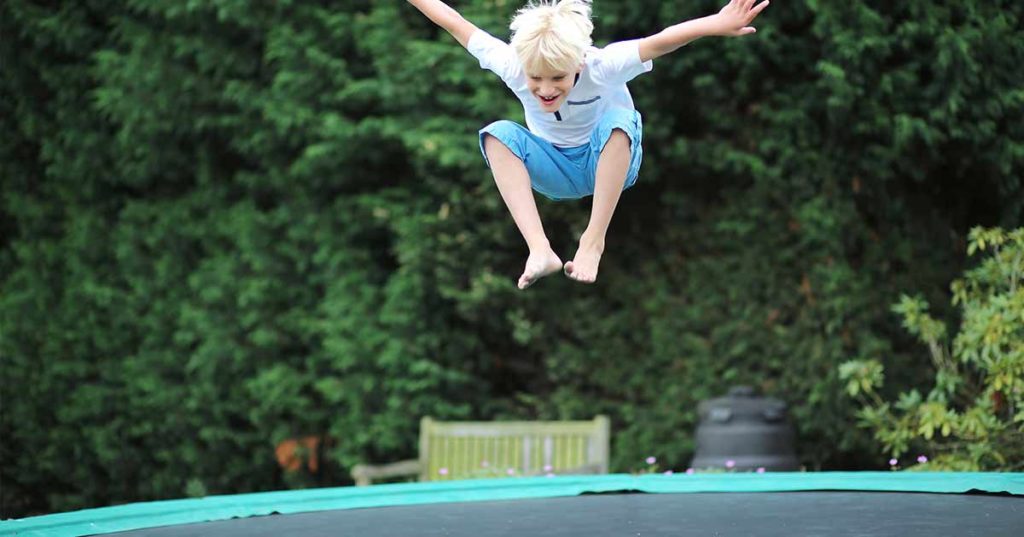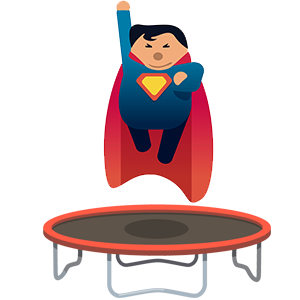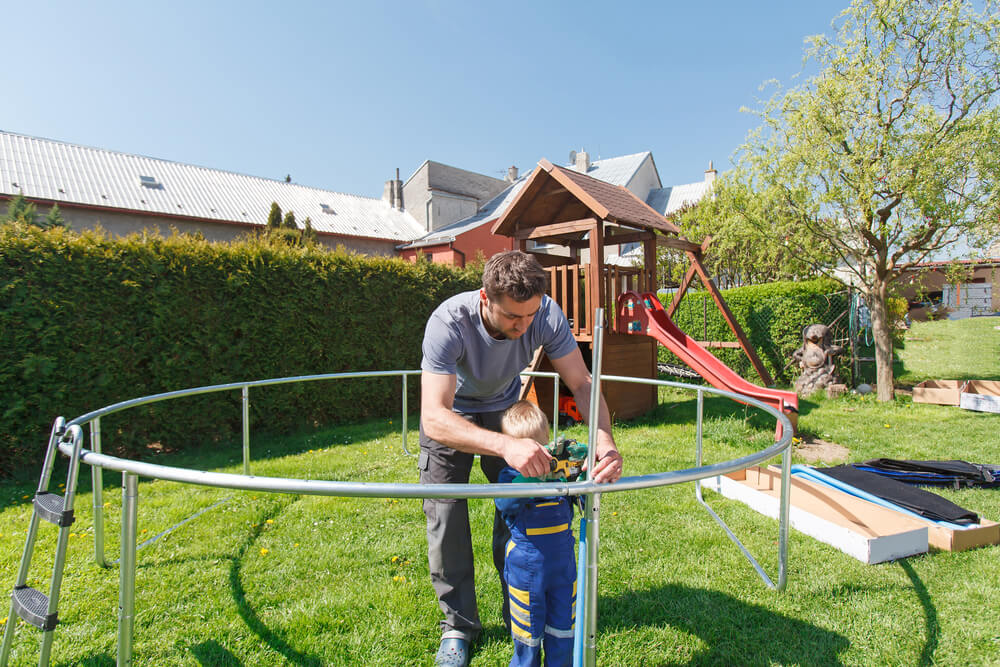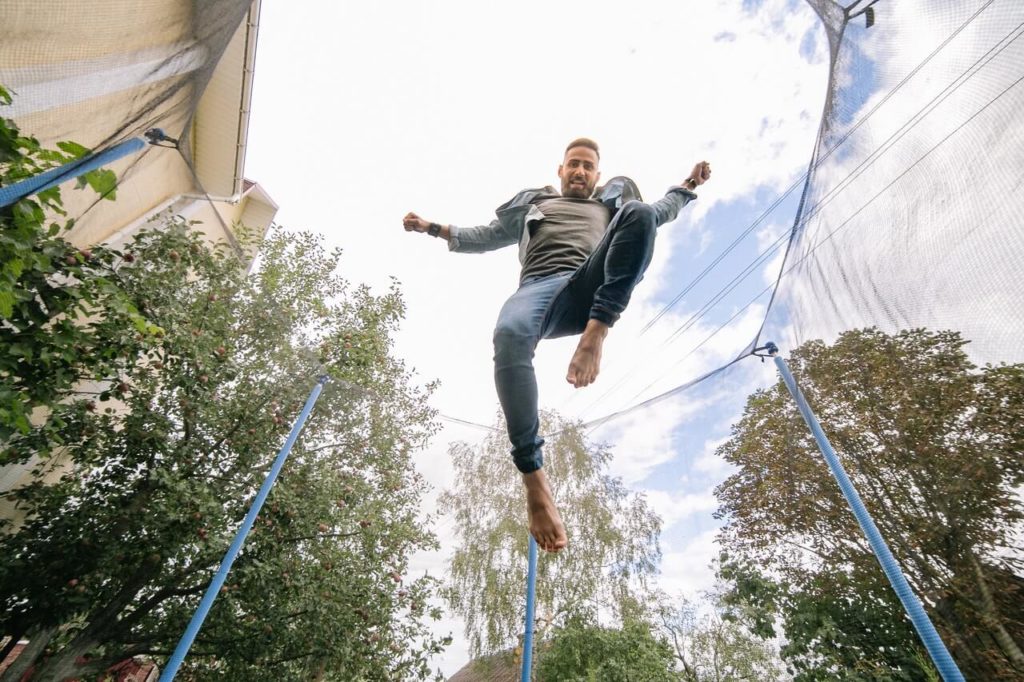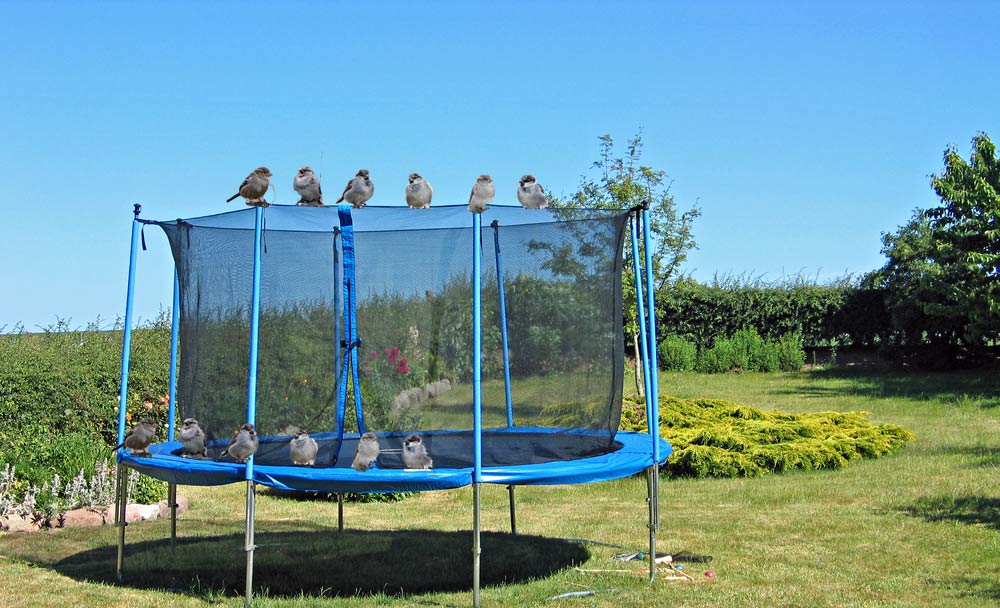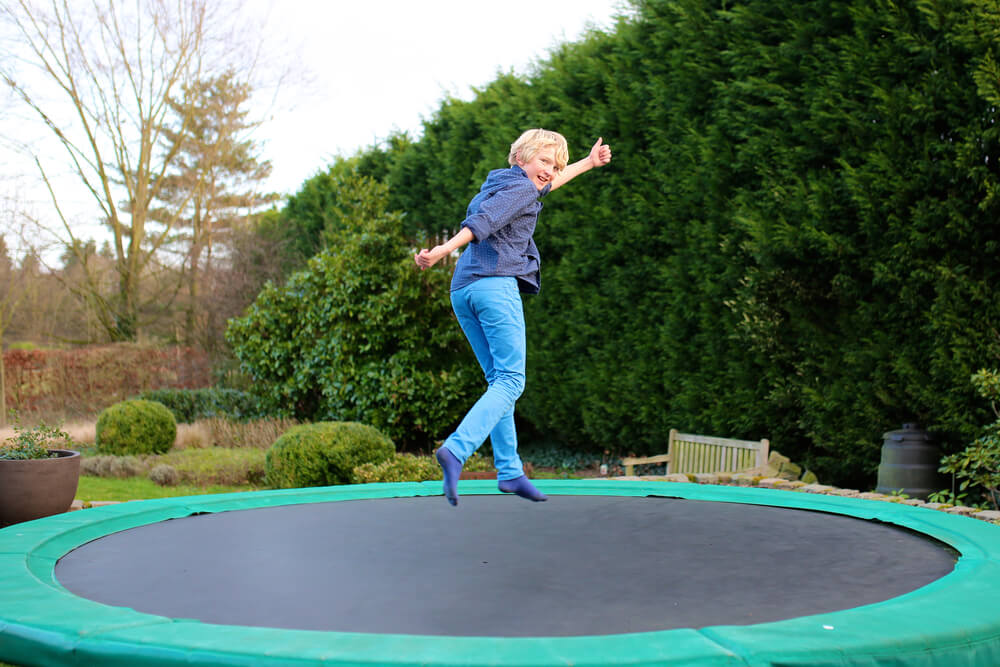Wetting a trampoline changes the way users enjoy their jumps. But is it worth the trouble? Continue reading to learn more.
Let’s be honest. The thrill of jumping on a trampoline is when the mat is bouncier.
Everyone begins to giggle as the bounces get even higher.
As long as the trampoline is sturdy and the mat is in perfect condition, jumpers should go as high to the sky as they possibly can.
You may be wondering, how do you make a trampoline bouncier?
Does wetting it affect the bounciness at all?
To clear your doubts, let’s jump in.
Does a Trampoline Become Bouncier When Wetted?
Yes, wetting a trampoline makes it bouncier than when it’s dry.
You get to bounce higher because when water hits the springs, they’ll loosen up, weighting the mat down and releasing you upwards.
How Does Water Increase Trampoline Bounce?
As you bounce and the wet trampoline moves up, and through the air, the evaporating moisture will steal the warmth from the mat fabric.
Colder elastic tends to resist deformation. This creates a more vigorous rebound to any given weight.
A trampoline consists of a taut, strong fabric that is stretched over the steel frame with coiled springs.
The bounce gets higher on a wet trampoline when the moisture loosens the springs and fabric to make them more flexible.
A wet trampoline’s mat has little molecular deformation caused by heat transfer.
Now that you know how a high bounce is attained on a wet trampoline, let’s explore more about wet trampolines.
Is a Wet Trampoline Safe to Bounce on?
The short answer is no.
Although the kids will love the idea of making slippery jumps, the risks will increase when they bounce on a wet trampoline. When they are wet, trampolines become more slippery.
So generally, wet trampolines are not safe. You have to be careful.
If you have to let the little risk takers use a wet trampoline, make sure to supervise them and observe general trampoline safety. This will prevent them from knocking into each other or colliding when the bounces get higher.
Also, make sure the trampoline is enclosed with a safety net. This will reduce the chance of them slipping across the mat and landing on the hard surface.
Will Jumping on a Wet Trampoline Ruin it?
Jumping on a wet mat alone won’t ruin the trampoline, provided the water doesn’t get to the frame and springs, causing rust.
The mat will be heavier when it holds water between the stitches, but this won’t affect the frame’s structural integrity. The springs won’t be affected by the wetness either.
Avoid wetting the springs intentionally, especially if the spring cover isn’t in good condition. Constant wetting can cause the springs to rust.
The mat is built to be water-resistant and can’t collect water. The trampoline material can handle pressure and force, whether it’s dry or wet.
What Factors Affect the Bounciness of a Trampoline?
The Trampoline Shape
When you have a round trampoline, the center of the trampoline is the bounciest spot on the mat.
A rectangular trampoline is often more bouncy, and its bounciness is evenly distributed to allow jumpers very high bounces from any area of the jumping mat.
The Jumping Mat
There are two types of jumping mats – recreational and performance mats. Performance mats are more bouncy. This is because they have more airflow, resulting in higher bounces.
Trampoline Springs
The longer, thicker springs a trampoline has, the more bounce they’ll produce.
Springs are responsible for absorbing the impact of your bounce and releasing it back to throw you up high.
If they can stretch out longer, they’ll utilize more energy and release it when they pull back. When springs are thicker, it just means they are designed from longer wires. More springs handle more energy.
Bouncier trampolines have 8.5” – 10” long springs compared to the 5.5” – 7” long springs from standard trampolines.
Can You Make Your Trampoline Bouncier?
Yes, you can make your trampoline unit bouncier than it is.
Here’s how:
Using Better Springs
New springs tend to take time before they finally become elastic enough to stretch fully.
If your trampoline’s springs are old, you can replace them with new ones. If the spring coils have gaps, they might have lost their elasticity. Check also to see if the springs are broken, rusted, or have cracks and need replacement.
Crossing the Springs
Crossing springs will upgrade your old trampoline, although this may cause them to break.
There are various ways to cross springs. You can use the V-pattern or X-pattern.
- In the V-pattern, you’ll take two springs at a time and attach them to the same hole in the frame. Attach each spring diagonally but in different directions. One spring will be attached to the right and the other to the left.
- For the X-pattern, take two springs at a time and attach them to the trampoline diagonally to form an X shape. One spring will be on top of the other.
Is it Advisable to Jump on a Wet Trampoline?
Not at all. It is not good to jump on a wet trampoline. It is pretty fun to enjoy a high bounce on a wet trampoline, but it isn’t safe. A wet trampoline is slippery; it might affect your balance, resulting in falls.
It is safer to stay away from a wet trampoline for these reasons.
- It’s easy to slide off a wet trampoline since the mat is frictionless. If the net is not enclosed, the little jumpers will slide off and fall hard on the ground, hurting themselves. Even if they don’t slide off, they might land in a very awkward position and get injured.
- A wet trampoline mat can conduct electricity, especially when jumping under the rain. Lightning can strike near the unit and cause serious injuries.
Take Away
Yes, wetting a trampoline will make it bouncier. But while you enjoy your high bounces, beware of the hazards your wet trampoline will pose to the jumpers.
On top of that, understand that there are better ways of making your trampoline bouncier without wetting it.

